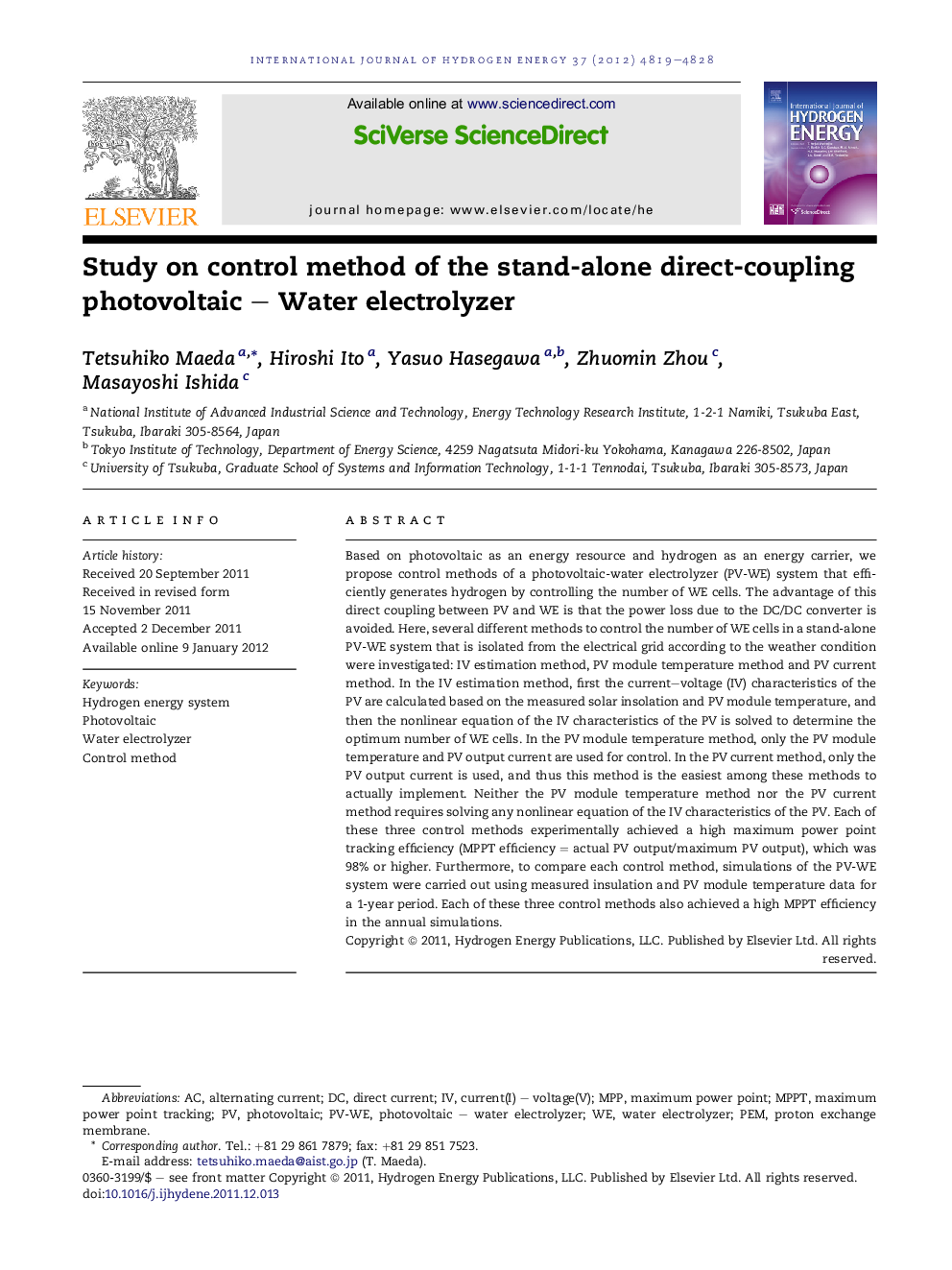| Article ID | Journal | Published Year | Pages | File Type |
|---|---|---|---|---|
| 1271499 | International Journal of Hydrogen Energy | 2012 | 10 Pages |
Based on photovoltaic as an energy resource and hydrogen as an energy carrier, we propose control methods of a photovoltaic-water electrolyzer (PV-WE) system that efficiently generates hydrogen by controlling the number of WE cells. The advantage of this direct coupling between PV and WE is that the power loss due to the DC/DC converter is avoided. Here, several different methods to control the number of WE cells in a stand-alone PV-WE system that is isolated from the electrical grid according to the weather condition were investigated: IV estimation method, PV module temperature method and PV current method. In the IV estimation method, first the current–voltage (IV) characteristics of the PV are calculated based on the measured solar insolation and PV module temperature, and then the nonlinear equation of the IV characteristics of the PV is solved to determine the optimum number of WE cells. In the PV module temperature method, only the PV module temperature and PV output current are used for control. In the PV current method, only the PV output current is used, and thus this method is the easiest among these methods to actually implement. Neither the PV module temperature method nor the PV current method requires solving any nonlinear equation of the IV characteristics of the PV. Each of these three control methods experimentally achieved a high maximum power point tracking efficiency (MPPT efficiency = actual PV output/maximum PV output), which was 98% or higher. Furthermore, to compare each control method, simulations of the PV-WE system were carried out using measured insulation and PV module temperature data for a 1-year period. Each of these three control methods also achieved a high MPPT efficiency in the annual simulations.
► A direct coupling photovoltaic-water electrolyzer (PV-WE) system was investigated. ► Several methods to control the number of WE cells were proposed. ► Each of these control methods experimentally achieved a high efficiency. ► Each of these control methods also achieved a high efficiency in the annual simulations.
